Abstract
Empirically based models depicting exchanges of C, N, and H2O in phloem and xylem among organs of nodulated white lupin (Lupinus albus cv Ultra) were constructed for the interval 51 to 58 days after sowing. Information was incorporated on the economy of C, N, and H2O in plant parts, the solute composition of transport fluids collected at selected sites on the plant, and the photosynthetic inputs, transpirational losses, and translocatory activities of different age groups of leaflets and stem + petiole segments of the shoot. Partitioning of C and N showed preferential transfer of N to the shoot apex, which imported 13 milligrams C per milligram N, compared with 54 milligrams C per milligram N for the nodulated root. Leaves translocated assimilates at a C:N weight ratio of 43 to 59, and older leaves serving the roots produced the translocate most rich in N relative to C. The shoot apex was enriched with N, additional to its intake from leaves, by direct uptake of xylem fluid (C:N ratio, 2.4) and receipt of nitrogenous solutes transferred from xylem to upward-moving phloem streams in upper regions of the stem. The models for flow of N and H2O indicated that xylem streams passing to leaves were substantially less rich in N than the adjacent stream moving through the body of the stem and that a progressive increase in concentration of N occurred within stem xylem elements from base to top of the shoot. This apparently resulted from an abstraction of N from xylem of departing leaf traces, possibly by xylem transfer cells, and a subsequent feedback of this N to xylem streams passing on up the shoot. Upper leaves and shoot apex, therefore, acquired more N from xylem per unit of H2O transpired than lower parts of the shoot.
Full text
PDF
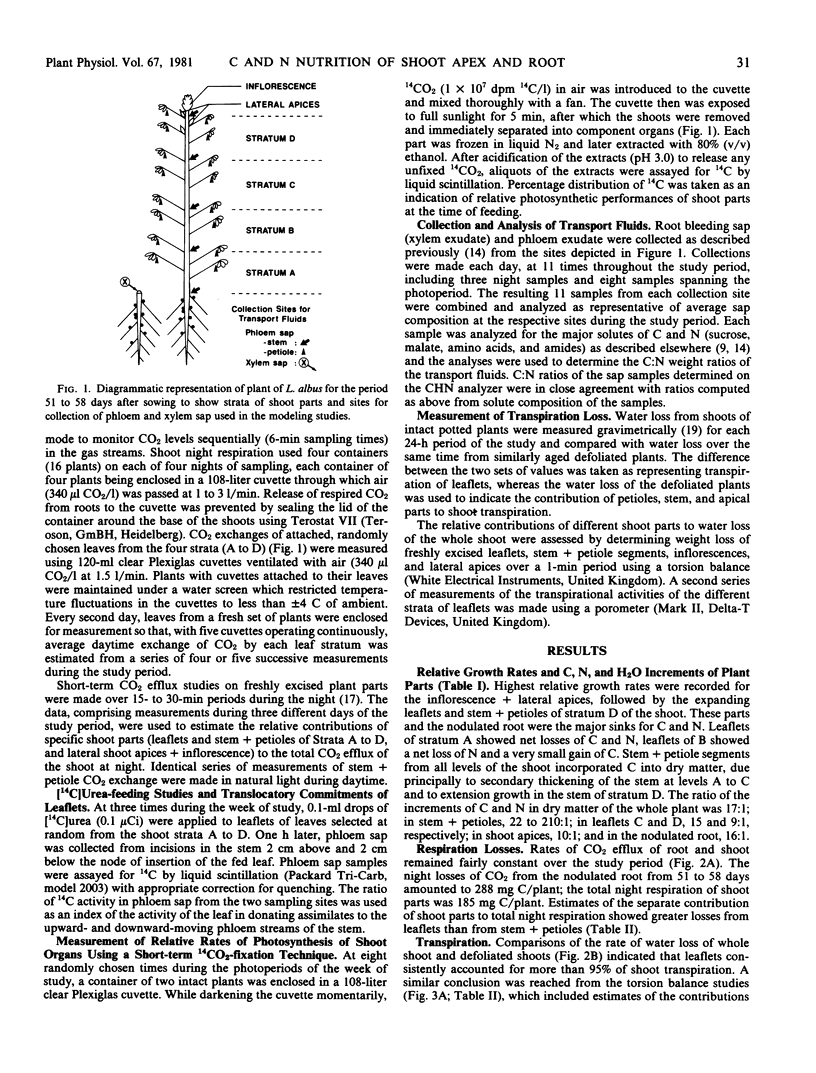
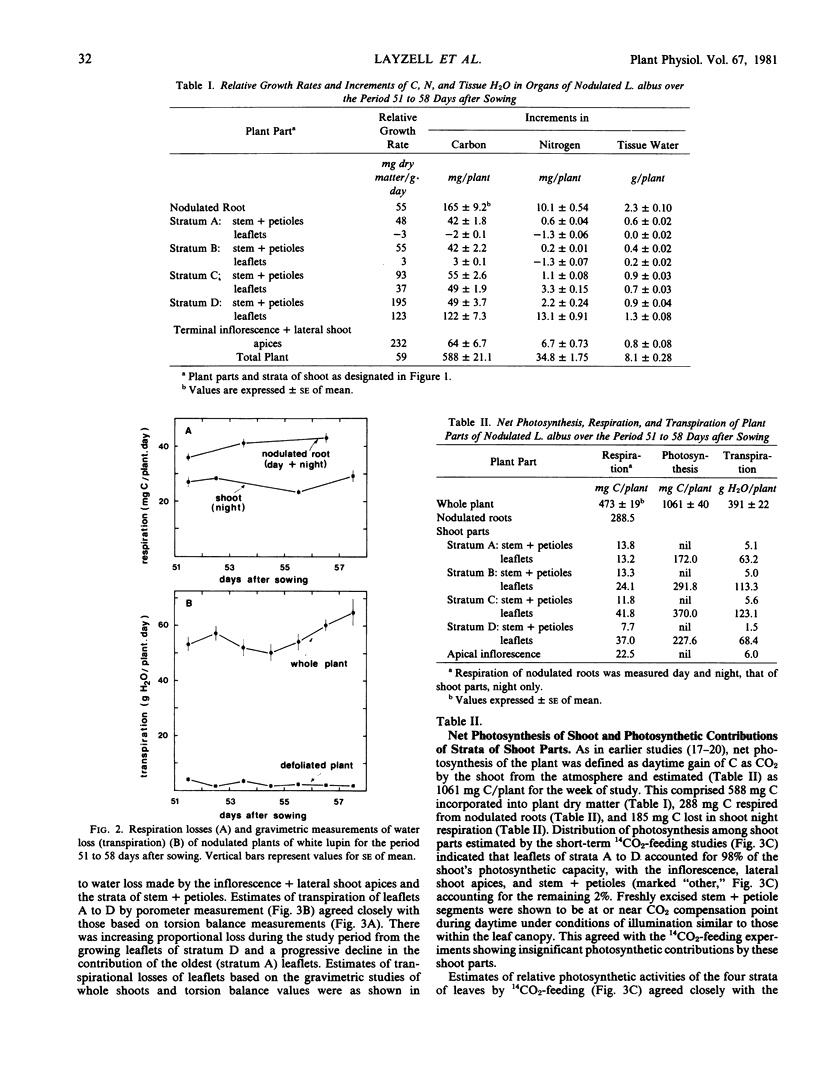
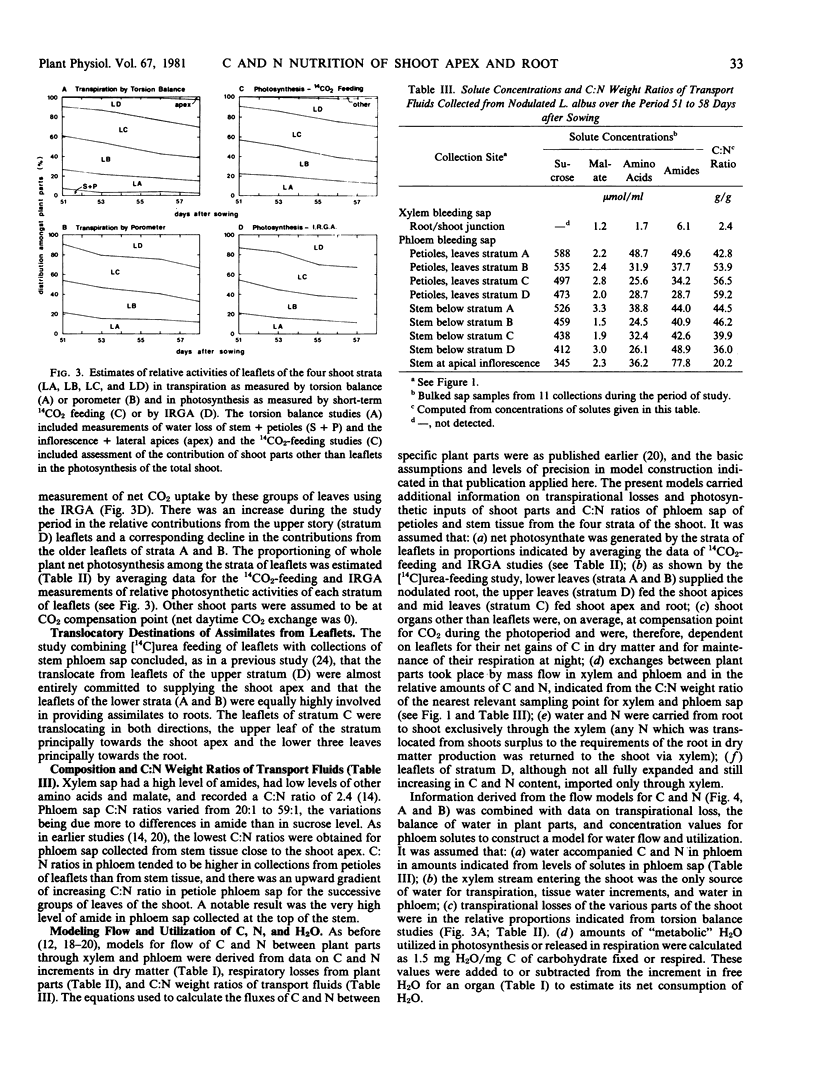
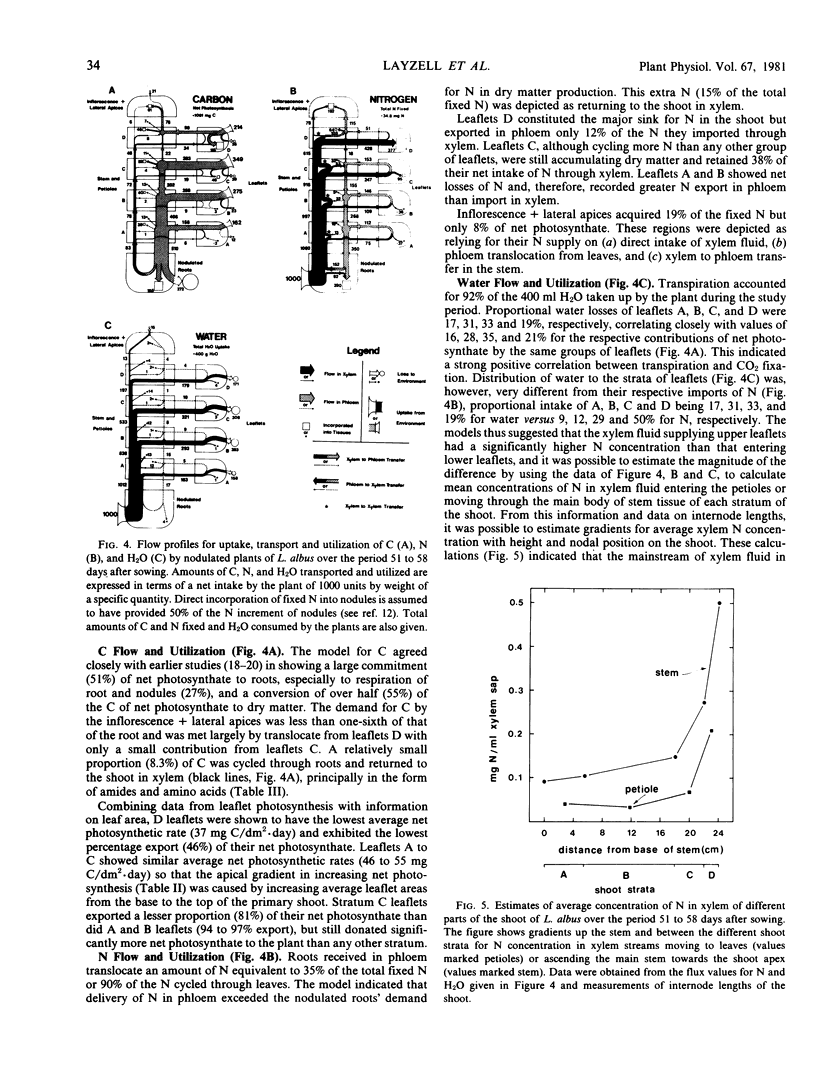
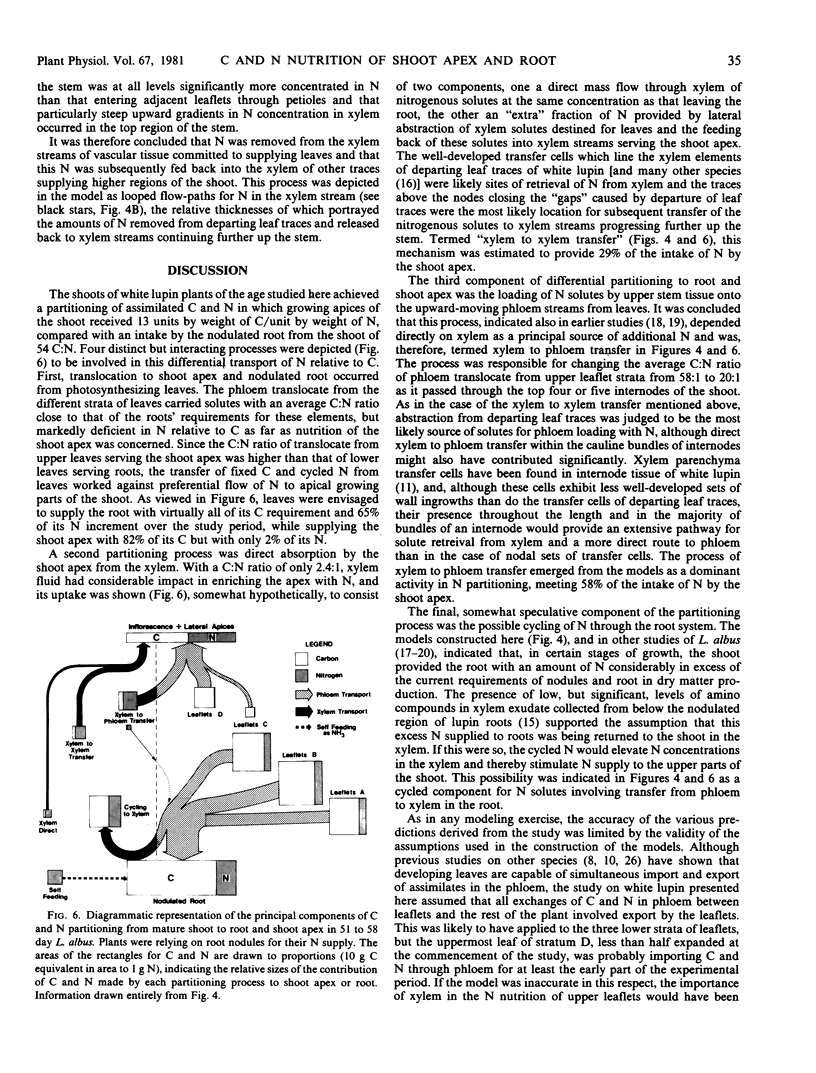
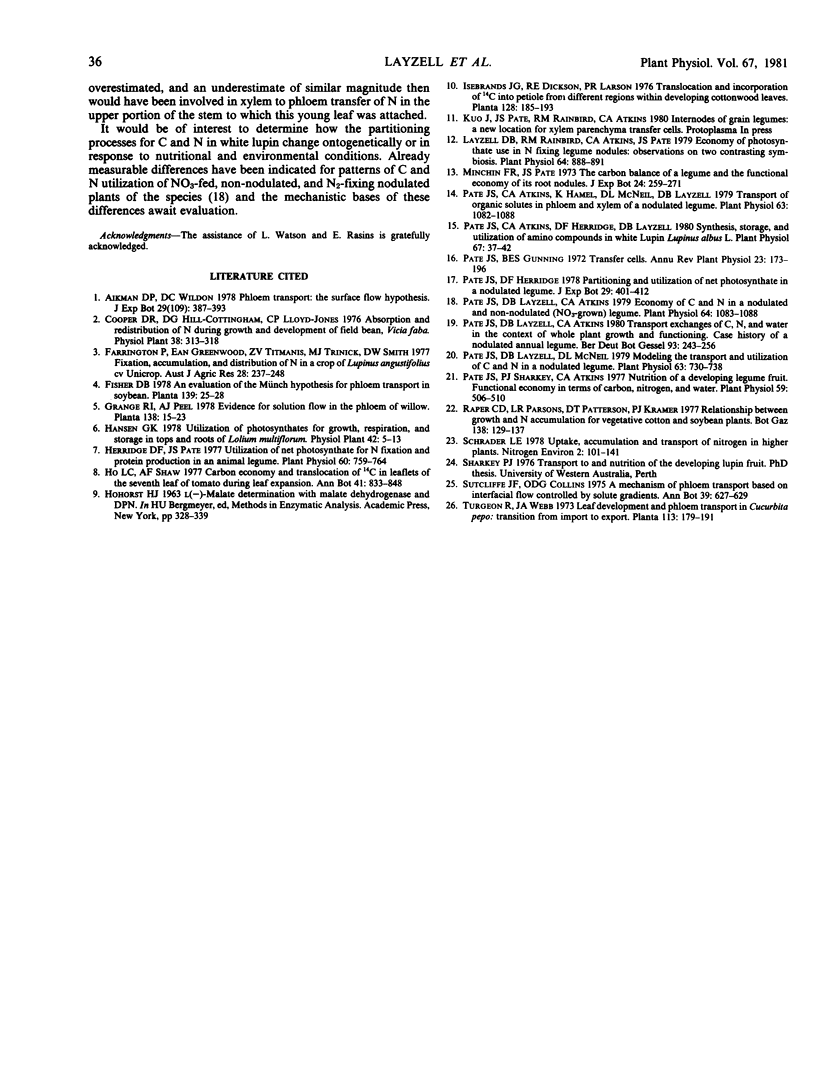
Selected References
These references are in PubMed. This may not be the complete list of references from this article.
- Herridge D. F., Pate J. S. Utilization of net photosynthate for nitrogen fixation and protein production in an annual legume. Plant Physiol. 1977 Nov;60(5):759–764. doi: 10.1104/pp.60.5.759. [DOI] [PMC free article] [PubMed] [Google Scholar]
- Layzell D. B., Rainbird R. M., Atkins C. A., Pate J. S. Economy of Photosynthate Use in Nitrogen-fixing Legume Nodules: Observations on Two Contrasting Symbioses. Plant Physiol. 1979 Nov;64(5):888–891. doi: 10.1104/pp.64.5.888. [DOI] [PMC free article] [PubMed] [Google Scholar]
- Pate J. S., Atkins C. A., Hamel K., McNeil D. L., Layzell D. B. Transport of organic solutes in Phloem and xylem of a nodulated legume. Plant Physiol. 1979 Jun;63(6):1082–1088. doi: 10.1104/pp.63.6.1082. [DOI] [PMC free article] [PubMed] [Google Scholar]
- Pate J. S., Atkins C. A., Herridge D. F., Layzell D. B. Synthesis, Storage, and Utilization of Amino Compounds in White Lupin (Lupinus albus L.). Plant Physiol. 1981 Jan;67(1):37–42. doi: 10.1104/pp.67.1.37. [DOI] [PMC free article] [PubMed] [Google Scholar]
- Pate J. S., Layzell D. B., Atkins C. A. Economy of Carbon and Nitrogen in a Nodulated and Nonnodulated (NO(3)-grown) Legume. Plant Physiol. 1979 Dec;64(6):1083–1088. doi: 10.1104/pp.64.6.1083. [DOI] [PMC free article] [PubMed] [Google Scholar]
- Pate J. S., Layzell D. B., McNeil D. L. Modeling the transport and utilization of carbon and nitrogen in a nodulated legume. Plant Physiol. 1979 Apr;63(4):730–737. doi: 10.1104/pp.63.4.730. [DOI] [PMC free article] [PubMed] [Google Scholar]
- Pate J. S., Sharkey P. J., Atkins C. A. Nutrition of a developing legume fruit: functional economy in terms of carbon, nitrogen, water. Plant Physiol. 1977 Mar;59(3):506–510. doi: 10.1104/pp.59.3.506. [DOI] [PMC free article] [PubMed] [Google Scholar]


